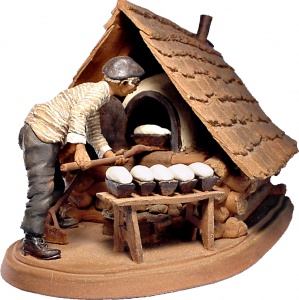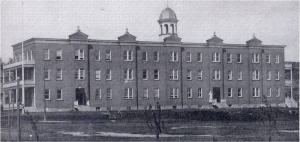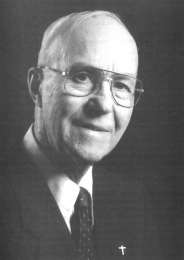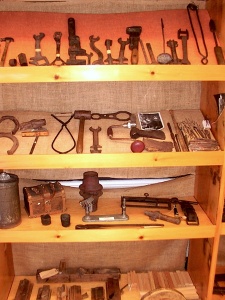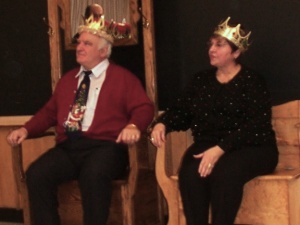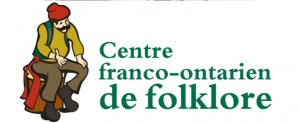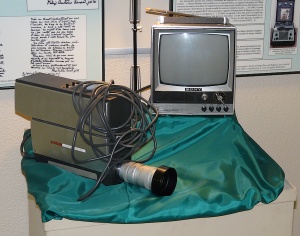Centre franco-ontarien de folklore (CFOF)
par Philippe-Shillington, Julie
The Centre franco-ontarien de folklore, founded in 1972, celebrated its 40th anniversary in 2012. It houses the work of its creator, Germain Lemieux S.J., which constitutes an incomparable founding work in Franco-Ontarian heritage. Recognized in 1991 as a provincial organization, the CFOF is also for the province's Francophone communities an important cultural space where the heritage of French Ontario, and in particular the repertoire of oral tradition, is gathered, preserved, disseminated, developed and enhanced.
Article disponible en français : Centre franco-ontarien de folklore (CFOF)
Cultural heritage and its preservation
French presence in Ontario goes back to 1610. Although explorers, coureurs de bois, missionaries, merchants and voyageurs travelled this great territory beginning in the seventeenth century, it was only toward the end of the nineteenth century that the French population settled permanently in the northern part of the province. It was the time of great migrations. The French-Canadian elites encouraged colonization of Northern Ontario lands, and railroads crossing the province took French Canadians and their culture to many places. Politicians and religious leaders exerted great influence at that time, and reminded the migrant population of the importance of maintaining their cultural heritage.
As the French Canadians found themselves in Anglophone territory, they soon felt the need to protect their faith and their language. In 1913, the Jesuits opened the doors of a Collège d'enseignement classique (secondary school focusing on the classics) at Sudbury, the Collège du Sacré-Coeur, and in 1942 a professor of rhetoric from this school, Father Lorenzo Cadieux, set up the Société historique du Nouvel-Ontario (SHNO), an important organization working to make known the history of Ontario and of Franco-Ontarians. A few years after it was founded, the Société undertook an ambitious project led by a Jesuit priest who was very interested in oral heritage: Father Germain Lemieux.
From Hercules and the Cyclops to Poil et plume and Brigandin the Giant
The young priest from Quebec arrived at Collège Sacré-Coeur in 1941. Father Germain Lemieux, a member of the Society of Jesus since 1935, was assigned a course on Latin and Greek institutions, which included various passages of the Iliad and the Odyssey. This instruction introduced students to legendary heroes and to Greek gods and goddesses. The exploits of Hercules and the legends of mysterious creatures of fantasy were a subject of study.
Father Lemieux was determined to make the course interesting. He noted many similarities between Greek mythology and the stories and legends of his childhood which were widely known in French Canada, and he started using his memories in preparing his lectures. In this way he gave new life to the rhetoric courses, which attracted more and more interest from Franco-Ontarian students at Collège Sacré-Coeur.
In his second teaching assignment in 1948, Father Lemieux applied to the Société historique du Nouvel-Ontario (SHNO) to undertake research into regional folklore. By meeting people from the region, he gathered stories and songs. Then, with his students, he analyzed them, finding invaluable information which he traced back to sources from the Middle Ages. He had read in a European journal that young people criticized their elders for not gathering their ancestors' oral heritage, and he proposed a more ambitious project to his superiors, declaring that the Jesuits had a duty to protect oral heritage. Thus was born a project of great scope, the project of a lifetime!
Leading the music
Father Lemieux had big plans. Among other things, he wanted to investigate to what extent Franco-Ontarians had "preserved the French spirit" (Note 1). He was told that his superiors would not oppose his plans if he was prepared to "devancer le rhythme du violon" (Note 2). The SHNO supported his request and sponsored it. Between 1948 and 1972, the music became more and more lively, with the result that the Jesuit priest's research among Francophone communities of Northern Ontario provided him with extensive corpus of oral traditions: songs, stories and legends. After more than a quarter century of research, the Germain Lemieux collection included 3118 folk songs and 680 stories and legends (Note 3).
The Centre de recherche folklorique was founded in 1948, and in 1961 became the Institut franco-ontarien. In 1972, the Institut de folklore received a charter and took the name Centre franco-ontarien de folklore. First located at the University of Sudbury (1972-1981), it moved to the youth centre (Carrefour francophone, 1981-1985), then to the Maison d'Youville (a separate school and later an orphanage; 1985-2002), and then bought a former school on Dollard Street (2002-2011) and finally returned to the University of Sudbury in 2011. It should be mentioned that in 1981 the Department of Folklore was created at the University of Sudbury, providing university ties for the CFOF. Through this organization Father Lemieux contributed further to "disseminating the oral heritage of French Canadians of Ontario" (Note 4).
1991: a turning point
In 1991, CFOF was finally recognized as a provincial heritage organization. This designation helped to set up another major project in which it collaborated with other organizations interested in Canadian Francophone heritage. It soon became an important leader in making known the rich Francophone heritage, and bringing to life stories, legends and songs that had been almost forgotten.
By obtaining the status of a provincial organization, CFOF had access to government operating grants. Before it was recognized, the Centre's mandate had been revised: "The mandate of the Centre franco-ontarien de folklore is to [...] enhance, for the benefit of the people of Ontario, the oral tradition by developing the Franco-Ontarian folklore collection" (Note 5).
Following these events, the CFOF developed an ambitious research project and received a mandate to carry it out. To this end, the Ontario Ministry of Culture and Communications, supported by the Office of Francophone Affairs and the Ministry of Northern Development and Mines, assigned to it the task of carrying out the Inventaire du patrimoine franco-ontarien (IPFO), and granted funding sufficient to do so. This project of drawing up an inventory of Franco-Ontarian heritage in all parts of the province was to focus on four themes: local history (to find the communities where Franco-Ontarians have become established), customs (including customs that set the rhythm of daily life, the religious calendar, and the seasons), material culture (built heritage and household objects), and oral literature (songs, stories, legends, proverbs, sayings...). The resulting documentation is invaluable: more than 10,000 entries, 300 ethnohistorical files corresponding to 514 places visited, 4,618 sites catalogued, as well as an impressive collection of 24,325 photographs (Note 6). A good part of this wealth of information is published in Habiter le pays.
Strengthening ties
Today, CFOF's mandate is still to gather, preserve, develop, transmit and enhance the Franco-Ontarian oral heritage by means of varied programming, based on dissemination and promotion. In parallel with that, CFOF ensures that the culture of Franco-Ontarian communities is enhanced by encouraging participation of Franco-Ontarians in cultural life. It creates cultural activities by giving the Francophones of Ontario the opportunity to celebrate traditional practices such as Saint-Jean-Baptiste Day, the Fête des Rois (Epiphany), story-telling evenings, cafés chantants, and others. In addition, since 2003 it has awarded annually Le Billochet du jongleur, a prize recognizing the exceptional contribution of an individual or organization to enhancement of Ontario French heritage. Through these various activities, CFOF strengthens the ties that unite Franco-Ontarians and gives them a sense of belonging. To recognize the CFOF's own contribution to Franco-Ontarian heritage, the Minister of Canadian Heritage awarded it the Parks Canada Prize in 1996, and in 2002 the Regroupement des organismes du patrimoine franco-ontarien awarded it the Roger Bernard Prize.
A billochet and a storyteller
The CFOF can be identified by its logo: a man dressed as a lumberjack, sitting on a log, the billochet. The storyteller is, by his gesture, communicating the message that his words are worthy of attention. This logo, recently updated, is now in colour and the lumberjack's pipe has been replaced by a ceinture fléchée (arrow sash).
In his book Les Jongleurs du billochet, Father Lemieux explained the logo: "The word jongleur has changed over the centuries. We use it here in its medieval sense of entertainer or teller of stories or tales. [...] As for the billochet [...] the expression "être sur le billochet" (to be on the log) was given to us without prompting by Mr Émile Roy, an old storyteller from Cache-Bay, Ontario, in the sense of being the official storyteller at a logging camp" (Note 7). The billochet was a section of a log used as a sort of stool in a logging camp; the storyteller sat on it.
Transmitting the rich heritage for the twenty-first century
The Centre franco-ontarien de folklore owes its existence to Father Germain Lemieux, S.J., who is generally recognized as a "passeur de mémoire" (transmitter of memory). For forty years, this Centre that he founded has been gathering and disseminating Franco-Ontarian heritage. Among the examples are the 33 volumes of the series Les vieux m'ont conté, containing the stories and legends gathered by Father Lemieux, which still today inspire the storytellers of French America. The centre also has a library of more than 5,000 books dealing with the history of Franco-Ontarian heritage, including Father Lemieux's writings such as Le Four de glaise, La vie paysanne, Les Jongleurs du billochet, and Chansonnier franco-ontarien. Along with the documentation of the Inventaire du patrimoine franco-ontarien (IPFO) and the sound archives, the works of certain artists - in particular clay sculptures by Maurice Gaudreault, Ange-Émile Maheu's maquettes illustrating stories, and Luc Robert's drawings, which are seen in exhibits, the CFOF's collections are certainly the richest collections of French heritage in Ontario.
Still devoted to enhancing heritage, the CFOF is keeping up to date. In 2008 it gained new momentum by drawing up a strategic plan. For example, it is working to develop its research and promotion to educational institutions, and is beginning to develop new partnerships as well as maintaining the existing ones. The recent production of the documentary Le Fondateur: la vie et l’œuvre du père Germain Lemieux s.j. (The Founder: the life and work of Father Germain Lemieux, S. J.), by Rachel Desaulniers, fits in to this plan, as it looks at the influence that this "transmitter of memory" has had on the community. In addition, the closer partnership with the University of Sudbury allows it to return to its sources and carry out projects that will be mutually beneficial. The CFOF is engaging in the twenty-first century by undertaking far-reaching projects.
Julie Philippe-Shillington B.A., B.Ed, EAO
Teacher, école secondaire Algonquin, North Bay
Additional DocumentsSome documents require an additional plugin to be consulted
Images
-
 Aquarelle de Claire G
Aquarelle de Claire G
uillemette-Lami... -
 Centre de documentati
Centre de documentati
on du CFOF -
 CFOF logo
CFOF logo
-
 Collège Sacré-Coeur
Collège Sacré-Coeur
-
 Equipment used by Fat
Equipment used by Fat
her Lemieux to ... -
 Father Germain Lemieu
Father Germain Lemieu
x, S.J. -
 Father Lemieux record
Father Lemieux record
ing Aldéric Per... -
 Le père Lemieux en co
Le père Lemieux en co
mpagnie d'un in...
-
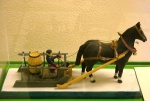 Maquette (sculpture)
Maquette (sculpture)
réalisée par le... -
 Maquette (sculpture)
Maquette (sculpture)
réalisée par le... -
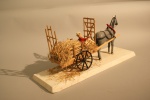 Maquette (sculpture)
Maquette (sculpture)
réalisée par le... -
 Maquette (sculpture)
Maquette (sculpture)
réalisée par le...
-
 Maquette miniature (s
Maquette miniature (s
ur clou de chem... -
 Maquette miniature (s
Maquette miniature (s
ur clou de chem... -
 Objects from the CFOF
Objects from the CFOF
collection -
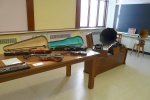 Quelques instruments
Quelques instruments
de musique de l...
-
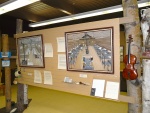 Quelques oeuvres et o
Quelques oeuvres et o
bjets de la col... -
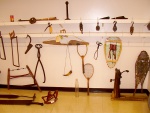 Quelques-uns des obje
Quelques-uns des obje
ts de la collec... -
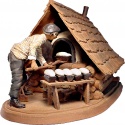 Sculpture by Maurice
Sculpture by Maurice
Gaudreault, "Th... -
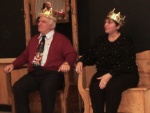 The Fête des Rois, 20
The Fête des Rois, 20
04
Vidéos
-
 Le conte : une manière de dire
Le conte : une manière de dire
-
 Entrevue avec Roger Gervais, directeur du Centre franco-ontarien de folklore de Sudbury
Entrevue avec Roger Gervais, directeur du Centre franco-ontarien de folklore de Sudbury
-
 Rencontre Québec-Ontario à Ottawa, automne 2011
Rencontre Québec-Ontario à Ottawa, automne 2011
Documents sonores
- Entrevue no 3992 réalisée par le père Lemieux avec madame Louis Prévos, d'Alban – chanson «Mes souliers sont rouges»
- Entrevue no. 195 réalisée par le père Lemieux avec monsieur Goyette, 9 novembre 1950
- Entrevue no. 3981 réalisée par le père Le mieux avec Aldéric Perreault de Sudbury - chanson «Le bon vin m'endort, l'amour me réveille encore»
Catégories
Notes
1. Germain LEMIEUX, "Mon projet folklorique cinquante ans plus tard" in Jean-Pierre PICHETTE (dir.), L’œuvre de Germain Lemieux, bilan de l’ethnologie en Ontario français, Sudbury, Centre franco-ontarien de folklore et Prise de parole, 1993, p. 29.
3. Jean-Pierre PICHETTE, L’Ethnologie dans le Nouvel-Ontario, Le Centre franco-ontarien de folklore et le Département de folklore de l’Université de Sudbury, Bellarmin, 1983, p. 124; Le Répertoire ethnologique de l’Ontario français, p. 185-186.
4. Jean-Pierre PICHETTE, L’œuvre de Germain Lemieux, bilan de l’ethnologie en Ontario français, p. 7.
5. Donald DESCHÊNES, "Perspectives du Centre franco-ontarien de folklore" in Yolande GRISÉ, États généraux de la recherche sur la francophonie à l’extérieur du Québec, Centre de recherche en civilisation canadienne-française, Ottawa, 1994, p. 164.
6. Le Centre franco-ontarien de folklore, Le plan stratégique, nouvel élan 2008-2011, p. 2.
7. Germain Lemieux, Les jongleurs du billochet, Contes et conteurs franco-ontariens, Bellarmin, 1972, p. 12.
Bibliographie
DESCHÊNES, Donald, « Perspectives du Centre franco-ontarien de folklore » dans Yolande
GRISÉE, États généraux de la recherche sur la francophonie à l’extérieur du Québec, Centre de recherche en civilisation canadienne-française, Ottawa, 1994, 283 p.
DUPONT, Jean-Claude et Jacques MATHIEU, L’Héritage de la francophonie canadienne, Les Presses de l’Université Laval, 1986, 267 p.
GERVAIS, Gaétan, Des gens de résolution, Prise de Parole, 2003, 230 p.
JAENEN, Cornelius (dir.). Les Franco-Ontariens, Ottawa, Presses de l'Université d'Ottawa, 1993, 443 p.
LEMIEUX, Germain, Les jongleurs du billochet, Contes et conteurs franco-ontariens, Bellarmin, 1972, 130p.
PICHETTE, Jean-Pierre, L’Ethnologie dans le Nouvel-Ontario, Le Centre franco-ontarien de folklore et le Département de folklore de l’Université de Sudbury , Bellarmin, 1983, p.114-128.
PICHETTE, Jean-Pierre (dir.), L’Œuvre de Germain Lemieux, s.j. Bilan de l’ethnologie en Ontario français, Sudbury, Centre franco-ontarien de folklore et Prise de parole, 1993, 529p.
SAINT-PIERRE, Serge, L’Inventaire du patrimoine franco-ontarien, dans « Aux origines de l’Ontario français », Rapport du Colloque 1993, Windsor (Ontario), Regroupement des organismes du patrimoine franco-ontarien, 1993 p.24-36, http://www.ropfo.ca/IMG/pdf/auxoriginesdelontariofrancais.pdf, page consultée le 18 juin 2011.
Le Centre franco-ontarien de folklore, Le plan stratégique, nouvel élan 2008-2011, 27 p.
Le Centre franco-ontarien de folklore, http://www.cfof.on.ca/content.asp?secp=organisme, page consultée le 20 mai 2011.

